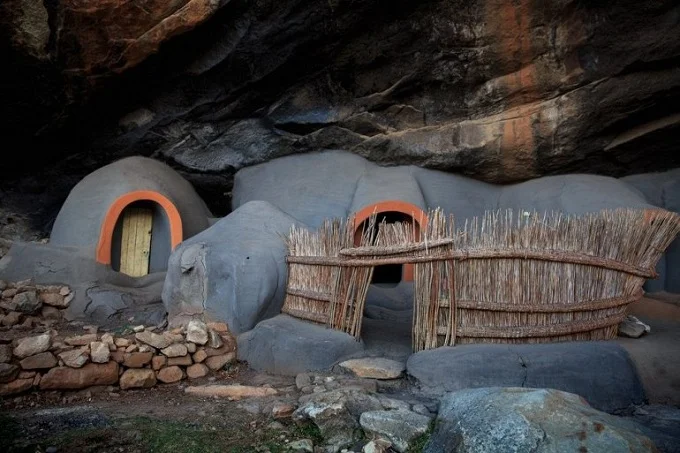Cannibalism and the Kome Cave Village! These slick and well-kept mud cave dwellings may be seen near the Lesotho settlement of Matheka.
These dwellings, which seem to be spanking new, were erected about 200 years ago and have been occupied by generations of descendants of the primitive people who built them in the early 1800s. The cave settlement of Kome is off the conventional tourist path, as is practically every other spot in Lesotho’s landlocked kingdom.
When the Zulu started raiding communities and infringing on their territory, the Sotho-Tswana were forced to escape to the mountains, and Lesotho was born. The Zulus’ constant invasions led the indigenous tribes to band together to protect themselves, and by 1824, they had elected their own king.
Diphakan, an era of widespread instability and violence in Lesotho’s history, is one of the worst times in the country’s history. The horrific practice of cannibalism began under Diphakan’s reign.
Drought increased raiding attacks, resulting in such severe famine that residents in various sections of Lesotho started to devour one other. Cannibals developed a taste for human flesh, and what started as famine became a habit.
Cannibals were expected to organize squads and go out looking for victims every day. According to missionary Ellenberger, who visited Lesotho in the 1860s, there were roughly 4,000 active cannibals in Lesotho between 1822 and 1828, each devouring an average of one person every month.
Extrapolating these data, he comes up with a startling total of 288,000 cannibalism victims. Over a ten-year period, between one and two million people perished as a result of the conflict.
A few tribesmen retreated to what is now the cave city of Ha-Kome and erected mud dwellings within the cave to avoid the awful death and cannibalism.
The mud dwellings are tucked behind a massive overhanging rock, with a stone wall serving as one of the house’s walls. Cannibalism has personally impacted the community chief; his grandpa was abducted and devoured while passing through cannibal territory.
Instead of seeking vengeance, the monarch chose to reconcile with the cannibals after learning of the tragedy. According to legend, Moshoeshoe gave his men orders to capture the cannibals but not to hurt them.
The captive cannibals were then treated to a lavish feast, after which Moshoeshoe presented each of them with a cow and a piece of land on which to construct a home.
King Moshoeshoe was a cunning, kind ruler who was ahead of his time in terms of deception. The example of Moshoeshoe and the cannibals have been linked to Nelson Mandela’s deed of reconciliation with Betsie Verwoerd, wife of former South African Prime Minister and apartheid architect Hendrik Verwoerd.
Cannibalism was outlawed in the late 1830s, but the story live on in folklore, music, literary works, and historical documents.
